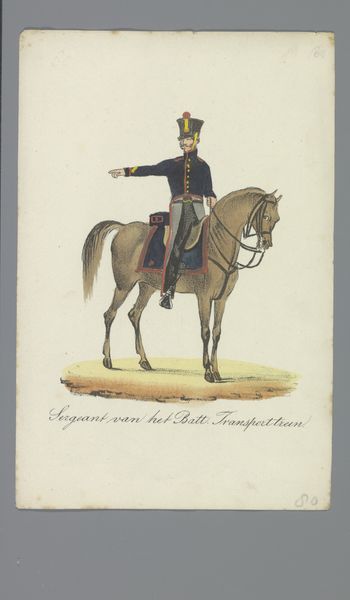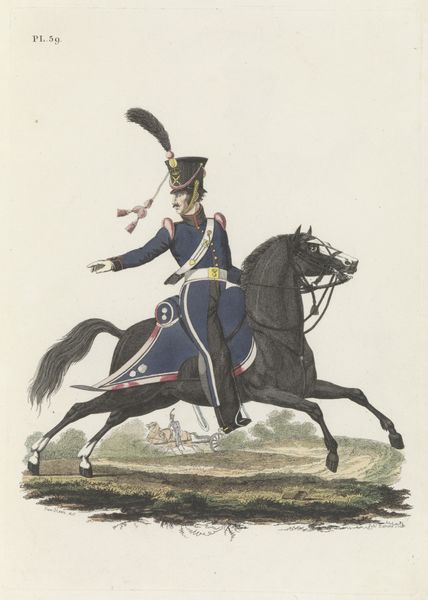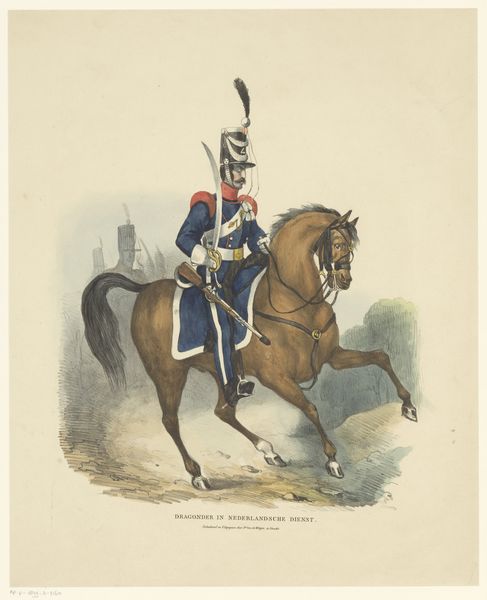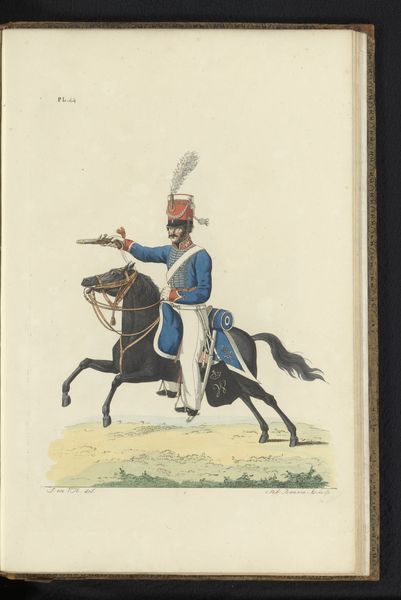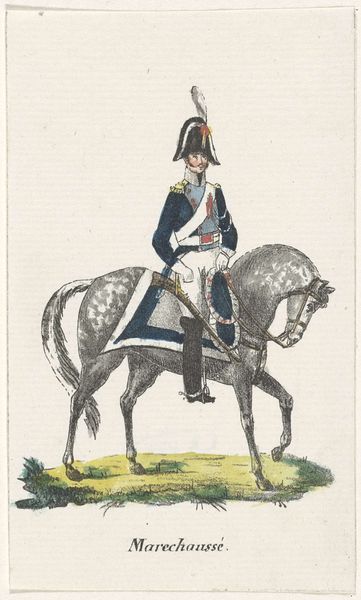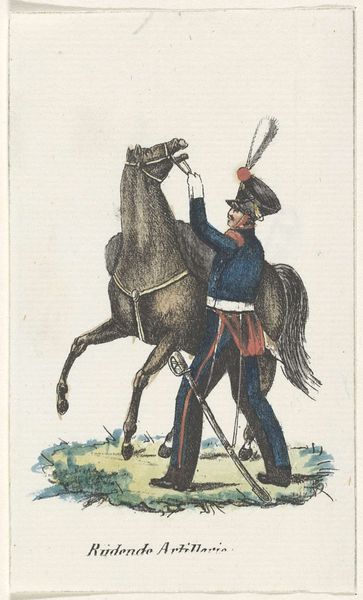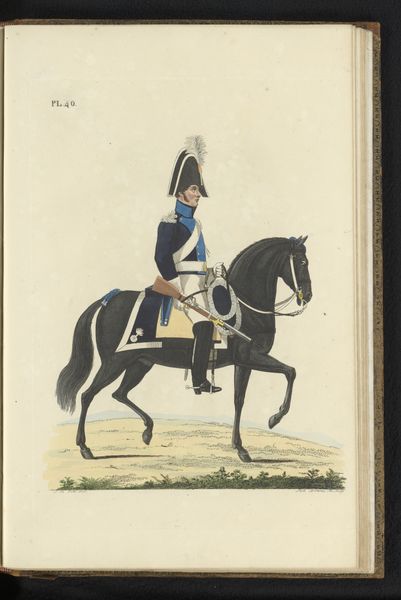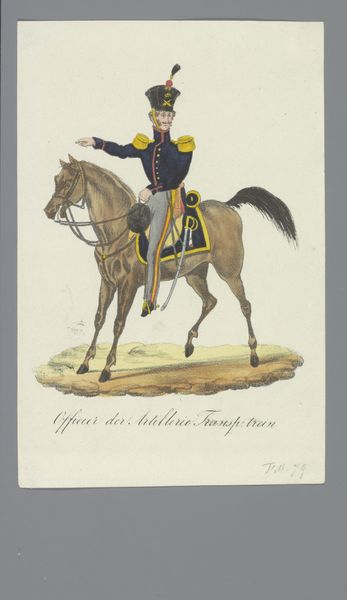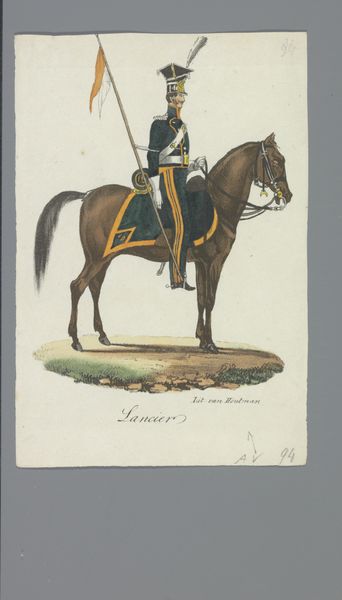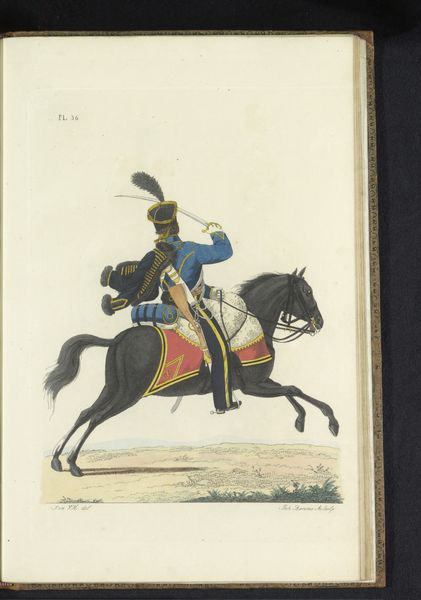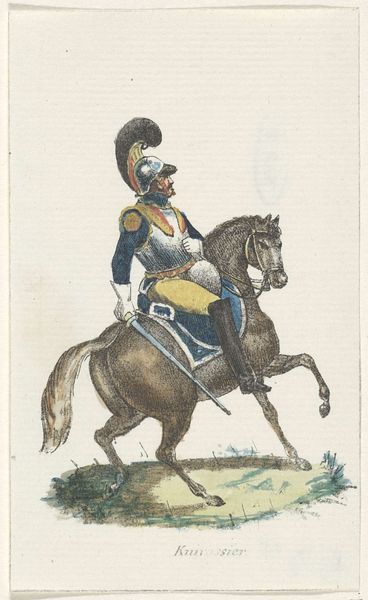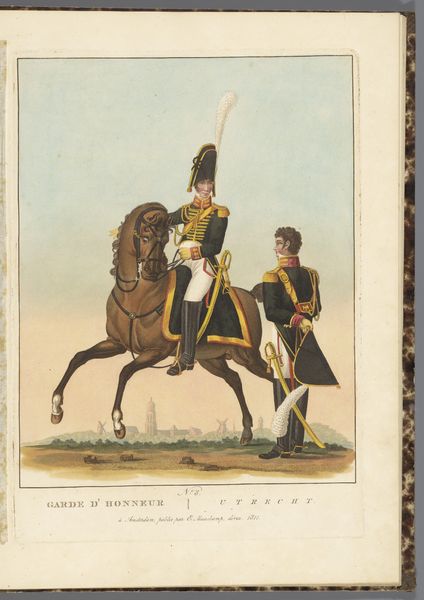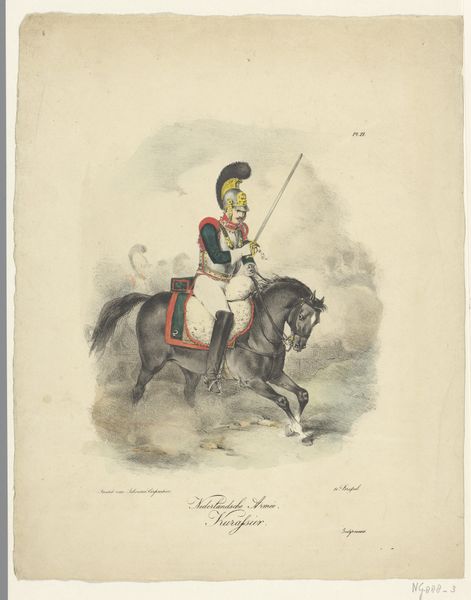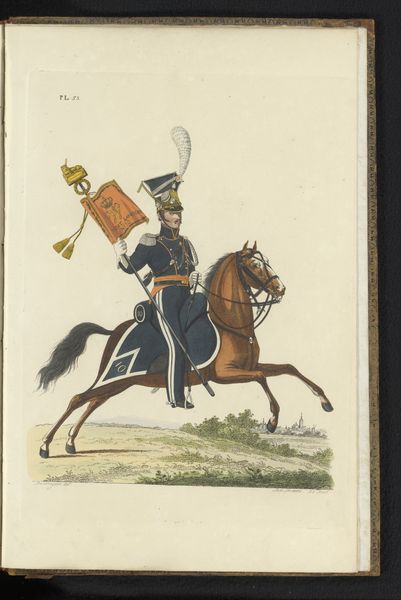
coloured-pencil, print
portrait
neoclacissism
coloured-pencil
coloured pencil
genre-painting
realism
Dimensions: height 390 mm, width 328 mm
Copyright: Rijks Museum: Open Domain
Curator: This is a colored pencil print dating between 1810 and 1899, entitled "Equestrian Portrait of William II, King of the Netherlands," which is displayed here at the Rijksmuseum. Editor: It feels… stiff, doesn’t it? Very formal, almost like a playing card illustration, but softened somehow by the medium. Curator: Well, such equestrian portraits served important social and political functions. Consider the setting: the almost sparse, open landscape acts as a stage. It’s meant to project power, legitimacy and establish a historical narrative. William II is visually linked to a tradition of strong leadership through this artistic choice. Editor: Absolutely, but the deliberate styling, while intending to project authority, for me creates distance. The rigid posture and the stylized rendering make him seem almost unreal, as if he’s performing rather than truly embodying power. How do we reconcile this with its context? Curator: By examining the period's prevailing aesthetic. This artwork adheres to a Neoclassical style, favored by European aristocracy, evoking a certain idealized grandeur tied to that period's politics of imagery. Editor: And what about accessibility? While monarchs and rulers would want to be depicted as powerful and larger than life, were these prints primarily for circulation amongst the elite? Or were they intended for a wider audience, embedding certain political ideas throughout society? Curator: Definitely, this was part of curating an image of the Royal Family through media accessible by broad parts of society. This print helped create an icon accessible for even a non-elite audience. Editor: So it's not just about representation but also about reinforcing existing social hierarchies by positioning the monarch within a very specific framework. Thinking about modern contexts, the deliberate curation of political figures' imagery, for instance in propaganda, resonates profoundly here. Curator: Indeed. It speaks volumes about the politics inherent in art itself. Every carefully placed detail has meaning, often connected to how those in power sought to be perceived, remembered, and accepted. Editor: Precisely. Looking at it this way underscores the political dimensions involved in what might initially appear as a standard stately portrait. It’s been quite a revelation. Curator: Yes, indeed; every viewing gives an even more thorough understanding of history!
Comments
No comments
Be the first to comment and join the conversation on the ultimate creative platform.
